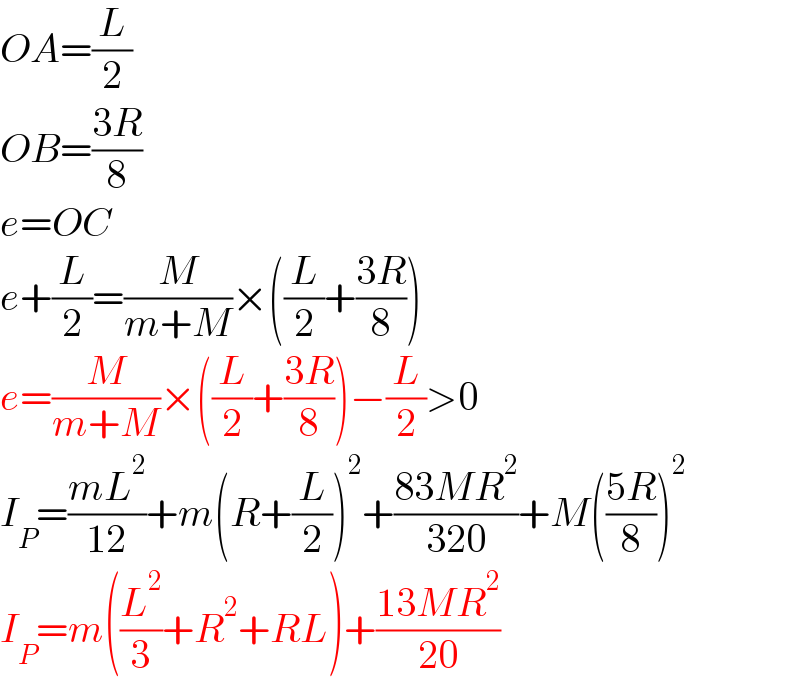
Question and Answers Forum
Previous in Oscillation and Waves Next in Oscillation and Waves
Question Number 175059 by mr W last updated on 17/Aug/22

Commented by mr W last updated on 17/Aug/22

Commented by mr W last updated on 18/Aug/22

Answered by mr W last updated on 18/Aug/22

Commented by mr W last updated on 18/Aug/22

Commented by mr W last updated on 18/Aug/22

Commented by mr W last updated on 18/Aug/22
![I_p ((dθ/dt))^2 +(m+M)g(R−e cos θ)=E=constant 2I_p ((dθ/dt))(d^2 θ/dt^2 )+(m+M)ge sin θ (dθ/dt)=0 2I_p (d^2 θ/dt^2 )+(m+M)ge sin θ=0 for small θ, sin θ≈θ ⇒(d^2 θ/dt^2 )+(((m+M)eg)/(2I_P ))θ=0 → d.e. of s.h.m. ω=(√(((m+M)eg)/(2I_P )))=(1/2)(√(([4(M−m)L+3MR]g)/(2m((L^2 /3)+R^2 +RL)+((13MR^2 )/(10))))) T=((2π)/ω)=4π(√((20m((L^2 /3)+R^2 +RL)+13MR^2 )/(10[4(M−m)L+3MR]g)))](Q175094.png)
Commented by Tawa11 last updated on 20/Aug/22

